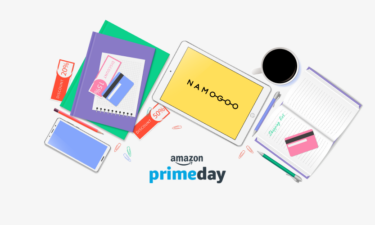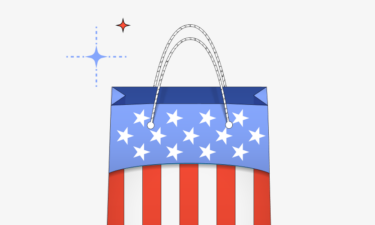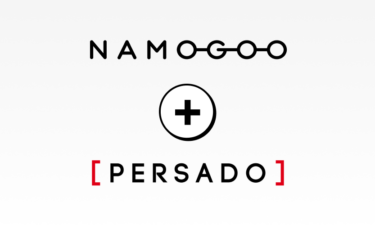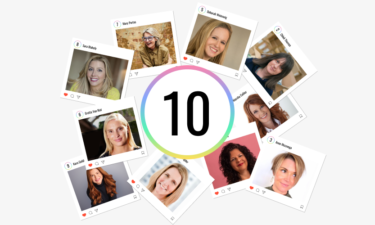It wasn’t long ago that identifying customer intent was a regular, organic part of the sales process. An experienced salesperson could get a pretty good idea of why a shopper was in the store simply by paying attention to their behavior. And, if in doubt, that salesperson could simply approach the consumer and ask how they could help.
In the eCommerce-driven world of retail in the COVID-19 era, determining customer intent is no less important than in the brick-and-mortar stores of yesteryear. But making that determination online takes real planning and effective use of technology. Once you’ve captured this data, you can use it to personalize the customer experience and help move a prospect smoothly, efficiently, and comfortably down the sales funnel.
How important is it for retailers to focus on identifying customer intent and adapting the customer experience accordingly? How can retailers make that happen efficiently? And where does this intent fit into the larger picture of personalization? These are some of the key questions we recently explored in a webinar we hosted jointly with Contentsquare, during where brands Kurt Geiger and Fresh shared some of the most valuable lessons they’ve learned while adapting to today’s retail environment.
Like so many brands, both Kurt Geiger and Fresh have faced significant challenges as a result of COVID-19. But they have both adapted, implemented innovative strategies, and boosted their online sales. Along the way, they have both placed an emphasis on personalizing the customer experience, including a heightened focus on customer intent.
Kurt Geiger: Increasing online sales through conversion rate optimization
For Kurt Geiger – a British footwear and accessory company that also owns the brands Carvela and Shoeaholics – the challenge posed by COVID-19 started out as a straightforward problem: People weren’t buying the same quantities of shoes as in the past. But over time, the company has been able to boost its sales numbers through a focus on online sales — and without lowering its prices.
“To start with, the traffic dipped. But then it came back really strong, and I think that was [due] to some of the things we did as a brand. Conversion was 20
[or]
30 percentage points up on the year – week in, week out,” recalls Gareth Rees-John, Digital Director at Kurt Geiger. “More loyal customers had a higher intent when they came to the site; there was less browsing behavior going on. And our eCommerce total turnover is double-digit on the year in total for the whole period, which we’re really pleased about.”
Much of the credit for those improvements stems from Kurt Geiger’s approach to eCommerce.

In addition to preventing Customer Journey Hijacking with Namogoo, he also recognizes the value of those prospective customers who would otherwise be subjected to ad injections. As he puts it, “The Namogoo hijacked segment have a higher purchase rate. Their conversion levels are higher, and they also respond to ads more effectively.”
Fresh: Innovating and personalizing to replace brick-and-mortar store sales
Meanwhile, for Fresh, the loss of business from brick-and-mortar stores meant that the skincare company would need to rely more heavily on online sales. Although the company is based in the U.S., it has a global presence. As a result, Geraldine Cohen, Fresh’s Senior Director of Global Digital, notes that the company is affected both by sales trends in Asia and in the Western world. While adapting to the trend of social shopping in Asian markets, in Western countries the company has largely focused on using eCommerce to replace the vacuum left by a lack of in-store sales.

She adds that 80% of those visitors are new, and the company’s website has seen a 30% increase in its conversion rate. Moreover, she states, “Digital was representing 30% of Fresh’s total business in 2019, and it’s now 60%.”
But while Fresh has performed strongly in terms of online sales, Geraldine points out that skincare sales tend to be driven by new shoppers, without much customer loyalty. To overcome this challenge, the company has re-launched its loyalty program in order to boost repeat sales. At the same time, Fresh has taken steps to better connect with members of Generation Z, such as offering a larger variety of payment options.
In addition, like Kurt Geiger, Fresh has used customer data to improve its personalization, focusing particularly on customer intent.
“We’ve also been working increasingly on segmenting our database and really understanding why people are coming to us,” she says, noting that the company’s website offers personalized product recommendations. At the same time, Fresh is also working to accelerate its page loading so as to decrease the likelihood of an impatient prospect leaving the website in frustration.
The big picture: Online sales are booming – but sometimes they need a push
Why is the idea of identifying customer intent such a timely one? For starters, there is the sheer growth of eCommerce that has taken place since the start of the coronavirus outbreak. McKinsey reports that earlier this year, online sales grew as much over the course of three months as they had in the previous 10 years.

And while trends vary from industry to industry, rapid increases have been a common theme across many of them. As Tal Rotman, our VP of Partnerships, puts it, “The question is: How do we keep these gains? How do the eCommerce retailers and brands keep these gains as we enter into a form of stability?” At Namogoo, we remove the friction caused by Customer Journey Hijacking, which disrupts visitors at every stage of their online shopping experience and harms their intent-to-purchase.
“Consumer-side ad injections are impacting over 20% site visitors and leading them to competitor sites at a time when it’s crucial for retailers to make the most of eCommerce,” explains Tal. “Brands removing that friction are not only seeing conversion and RPV increase significantly, but since ad injections disproportionately target their most active online shoppers, they’re maximizing both immediate returns and long-term loyalty on their customers with the highest purchase intent.”
But at the same time, a relatively small portion of eCommerce site traffic is actually prepared to make a purchase. Data that Namogoo and Contentsquare have collected show that:
- The average customer views 24 pages before converting.
- 56% of online shoppers who enter their personal details nonetheless abandon their shopping carts without making a purchase.
- Only 33% of visitors who reach an eCommerce website’s login page go on to make a purchase.
Of course, the optimal customer journey for a shopper who is prepared to make a purchase looks very different from the ideal journey for one who is just browsing or conducting research. Yet, many retailers don’t have an effective way of differentiating between those two audiences.
”Different customers have different needs, we analyze their behavior in order to give them the best experience possible [over] the lifetime. Focusing on the intent allows us to prioritize the long-term metrics like the lifetime value of the customer,” says Gilad Zubery, EVP of Global Partnerships at Contentsquare.
Today, there are digital innovations that can effectively help retailers identify and leverage customer intent to automatically personalize the customer journey and improve business results – helping them thrive not only during this period but into the future.
Ready to learn the key lessons Kurt Geiger and Fresh have gleaned while adapting to the retail and eCommerce trends of the COVID-19 era? Catch the full webinar today.







